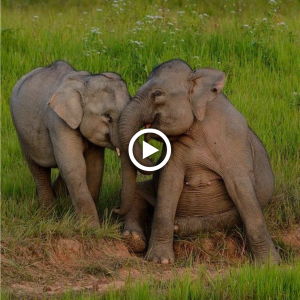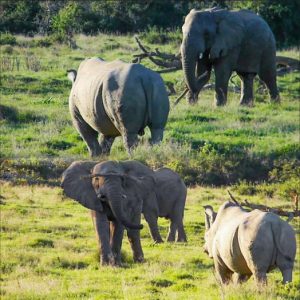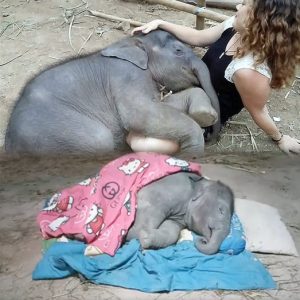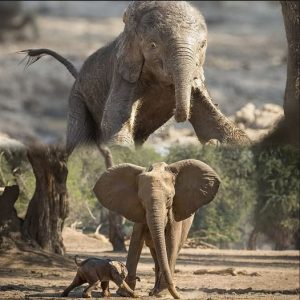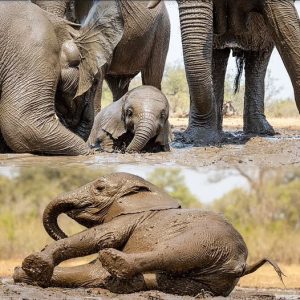A story of dedication and heartbreak unfolded in Laikipia, Kenya, as conservationists rallied to save an injured bull elephant.
This effort highlighted the unwavering commitment of the Laikipia Unit Veterinarian and other dedicated individuals working tirelessly to preserve these magnificent creatures. Yet, despite their best efforts, the outcome was tragic.

The Milgis Trust scouts, who monitor elephant well-being, were the first to notice signs of trouble. They saw that a bull elephant was suffering from septic wounds in his right foreleg and hind leg, leading to noticeable lameness and swelling. The concern grew as the condition of the elephant deteriorated.
The rescue operation began by immobilizing the elephant found in a luggage—a dry riverbed.

The team administered a tranquilizer, Etorphine Hydrochloride, with precision, and the elephant settled into a left lateral recumbent position within six minutes, ensuring a safe procedure.
During the examination, veterinarians discovered septic wounds that had penetrated the right carpal joint and extended dorsally on the right gluteus.
These wounds were carefully treated with debridement applying Iodine and green clay.

The medical team also administered antibiotics, multivitamins, and corticosteroids through intramuscular injections to support the elephant’s recovery.
However, despite the team’s efforts, the situation took a turn for the worse. The anesthetic drug was reversed after 25 minutes, but the elephant remained recumbent, unable to stand despite multiple attempts to assist him. Tragically, the bull elephant died 18 hours after the darting, despite the team’s dedicated efforts.
A post-mortem examination revealed that the septic wounds were caused by gunshot injuries, resulting in a fracture dorsal to the right carpal joint.

The immediate cause of death was septicemia and osteomyelitis, stemming from the gunshot wounds.
This discovery shed light on the unfortunate circumstances that led to the elephant’s passing.
This poignant tale underscores the ongoing challenges and relentless efforts to protect the wildlife in Laikipia, Kenya.

It serves as a sobering reminder of the need for continued conservation work and vigilance to ensure the safety of these majestic animals.
